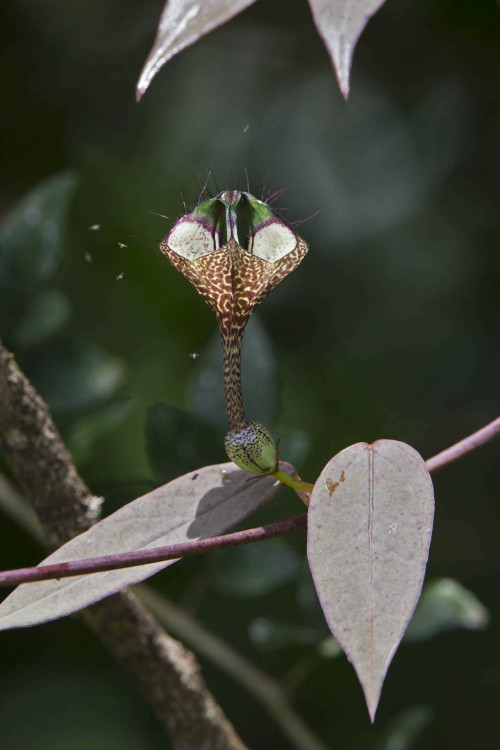
From Laly Joseph, plant conservationist and ecosystem gardener: “We have around 30 species of Ceropegias under cultivation, most of them are endangered or threatened in the wild, from habitat destruction and over-extraction of the plants for their edible tubers, and now for ornamental collections. We have been working on them for the last few years. Main difficulties they face are fungal and caterpillar attacks. Climate change is also becoming a problem for many of the Ceropegias. Pollen production is affected by weather. Also water availability during their growing period, affects seed production. We have managed to propagate 20-30 plants per species. A few are very difficult and we have only one or two plants. Prof Yadav of Kolhapur University was so happy to see C mahabalae under conservation cultivation here, that he organized an expedition so that we could find more. Now all the species here are making seeds, so we hope that next year the population under ex-situ conservation at the Sanctuary will double at least.”

From Wikipedia: “Ceropegia is a genus of plants within the family Apocynaceae, native to Africa, southern Asia, and Australia. It was named by Carl Linnaeus, who first described this genus in volume 1 of his Species plantarum, which appeared in 1753. Linnaeus thought that the flowers looked like a fountain of wax. From this the scientific name was derived: ‘keros’ meaning wax and ‘pege’ meaning fountain (Pooley, 1998). They have many common names including lantern flower, parasol flower, parachute flower, bushman’s pipe, string of hearts, snake creeper, wine-glass vine, rosary vine, and necklace vine. Ceropegia species are traded, kept, and propagated as ornamental plants.”

Ceropegias are sometimes mistaken for carnivorous plants, because of their elaborate flower structures that are indeed meant to trap flies. But this is not to “eat” them, but rather to entice and trap them for long enough that the flies pollinate them as they try to find a way out.

The Western Ghat Ceropegias all tend to be weak trailers or climbers. They grow from round potato-sized tubers sitting fairly deep in the soil. They are inconspicuous for most of the year, until they start to flower in their unique spectacular fashion.

From the Succulent Plants website:
This genus contains a diverse group of over 160 species distributed across Africa and Asia, from the Canary Islands, to Madagascar, India, Sri Lanka, China, Indonesia, Phillipines, New Guinea and Australia. The flowers occur singly or in umbel-like clusters and have a tubular fused petals and sepals. The base of the tube is often inflated and may have downward pointing hairs on the inside as well as the outside. Flowers can vary in colour from deep purples and reds to greens and yellows. In several species, the tips of the lobes form a cage-like structure. All this elaborate structure in order to trap flies which can remain inside until the flowers wilt.
The genus used to be placed in the family Asclepiadaceae which has now become a sub-family (Asclepiadoideae) within the Apocynaceae. Other genera in this family include Tabernaemontana and Rauvolfia in India. as well as the widely planted Frangipani, originally from South America. (Wikipedia).

Above: the potato-like tuber of a Ceropegia plant in a pot. Under cultivation, especially in pots and in this humid environment, Ceropegia tubers need to be planted close to the surface of the soil, even a little exposed, as they are very susceptible to rot induced by high moisture.

Above: Laly Joseph at work planting Ceropegias. Here it’s possible to see how slender these vines are.
Purvy Jain has had success with conserving three Ceropegia species in habitats. These are now making seeds which are germinating on their own, and beginning to form small populations.
Photos by Abhishek Jain and Suprabha Seshan. All the plants shown here are Western Ghat species under conservation at GBS.
